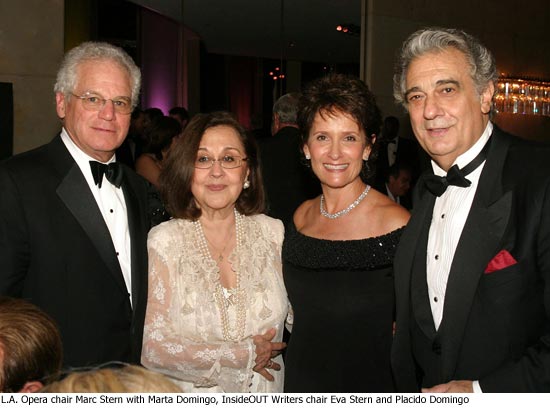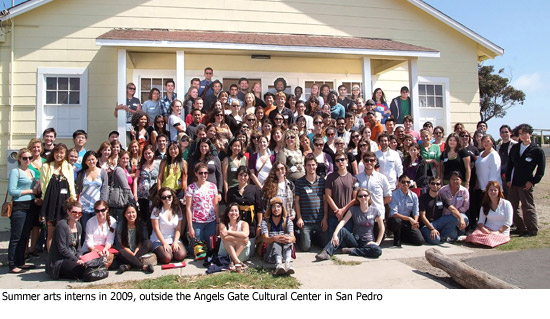Potentially negligent foster care agency may lose county contract
March 25, 2010
Deeply dismayed by the blunt-force trauma death on March 4 of two-year-old toddler Viola Vanclief in a foster-care home, the Board of Supervisors this week authorized a formal “Do Not Use” order for United Care, Inc., the foster-family agency that supervised the home and 87 others in Los Angeles County. More than 200 children currently placed in those homes will be reassigned to other foster-care facilities. The agency had initially been placed on “hold, do not refer” status shortly after the incident was first reported.
At this Tuesday’s meeting, the Board will consider terminating United Care, Inc.’s County contract completely. Since Viola’s death, five previous abuse complaints have emerged about the foster-parent currently under investigation in that case, including a substantiated 2002 case of neglect of her own biological child. Since 2001, United Care itself had repeatedly been accused of permitting abuse and neglect in its supervised foster homes, and at least three dozen referrals were later substantiated.
Toss out those smokes, dust off that bike
March 25, 2010
Flush with a new $32 million public heath grant, Los Angeles County in the weeks ahead will begin attacking obesity and tobacco use by underwriting an array of nutrition and fitness strategies, including an innovative plan for bicycle and pedestrian paths near Metro rail stations.
In all, nearly 20 “Transit Oriented Districts” are being envisioned along the Metro Blue and Green lines in the City of Los Angeles and unincorporated county territories where obesity rates are particularly high among children and adults. The idea is not only to lay the groundwork for pedestrian and bike amenities around the stations but also to expand access into surrounding neighborhoods with populations of at least 550,000.
In a boon to the region’s increasingly organized cycling community, crucial funding also will be provided for environmental reviews of the county’s Bikeway Master Plan, a network of on- and off-road bikeways. The plan, currently being drafted, was facing a major hurdle because money for the assessments was expected to start drying up.
The county’s bike plan coordinator, Abu Yusuf, said he “was overjoyed” to learn of the infusion of money. “It wasn’t a sure thing,” said Yusuf, an avid cyclist. “We could have definitely been under the chopping block.”
These efforts, important as they are, represent just one facet of a sweeping strategy that the county’s Department of Public Health proposed late last year to U.S. Health and Human Services and the Centers for Disease Control and Prevention.
Facing intense competition from communities nationwide, Public Health was awarded $16 million for obesity, nutrition and physical activity projects, along with another $16 million for anti-tobacco efforts. The grant, provided under the American Recovery and Reinvestment Act (ARRA), was announced Friday.
“I personally know the challenges that come from quitting smoking and adopting better habits, such as exercising more and eating healthier,” said Supervisor Zev Yaroslavsky, who pushed public health officials to expand their proposal to include bicycle and pedestrian amenities as well as a social media campaign. “At a time when government so often has been forced to cut the budget, it’s nice to gain some new resources to create healthier, smoke-free environments and reduce chronic diseases such as diabetes.”
The grant monies, which were distributed nationwide, signify a turning point of sorts for the federal government, which traditionally has not invested huge sums at the local level for preventive health measures or for planning, policy support and logistical direction.
The largest chunk of the grant, for example, will finance six three-member “mobilization” teams that will be dispatched to work with community groups, local officials and others to support passage of second-hand smoke rules in at least 20 cities in L.A. County.
The county also will team up on several fronts with the Los Angeles Unified School District and the Los Angeles County Office of Education on issues ranging from physical education to the creation of more stringent nutritional standards for school meals.
Said Dr. Paul Simon, director of the county’s Public Health Chronic Disease and Injury Prevention: “We want to build healthier lives, from the ground up.”
To read additional details of the Public Health Department’s pitch to the federal government, as reported to the Board of Supervisors last November, click here.
Running (and walking) for a cause
March 25, 2010
Last week’s L.A. Marathoners might not want to put their running shoes away quite yet. The 8th annual “Victory for Victims 5k and 10k Run/Walk” will be held April 11 at Lake Balboa in Encino and benefit the Northridge Hospital’s Center for Assault Treatment Services (CATS). CATS is the only 24/7 child and sexual abuse treatment program in the San Fernando and Santa Clarita valleys.
Runners will travel through the newly completed Bull Creek Channel Ecosystem Restoration Path, home to hundreds of wildlife species. As an official “cool-down” event to the Marathon, the Run/Walk will feature 2,000 runners, culminating in a finish line festival for all attendees.
Several Los Angeles and sports personalities are expected to attend the event, including Olympic Decathlon gold medalist Rafer Johnson and L.A. City Councilmember Tony Cardenas. The Laker Girls will lead aerobic exercises and food will be provided by such vendors as Los Toros Mexican Restaurant, Jamba Juice and Ben & Jerry’s Ice Cream.
Fundraising and registration details are available at www.abuse-assaultservices.org.
Posted 3/25/10
BYOB means bring your own binoculars
March 25, 2010
The sessions will take place in Burton Chace Park in Marina del Rey.
Each outing includes a lecture and an overview of the Ballona Wetlands, followed by something that sounds lots better than reality TV: a chance to “observe various bird species compete for resources in the shoreline and vegetation habitat.”
Pre-registration is required for the two-hour outings. More information is here.
Posted 3/25/10
Teen tragedy, set to music
March 24, 2010
Eli Villanueva is driving with his girlfriend in Burbank when they come upon two people on a bridge over the 5 Freeway.
The young man looks ready to jump. The young woman beside him is trying to restrain him.
“She was desperate. She was hysterical and really trying to hang on,” Villanueva remembers. “I had stopped the car and went over to see if I could offer some assistance…As I get there, the young man sees me.” Villanueva reaches out, clasps the young man’s hand and helps pull him back from the brink.
That split-second, adrenalin-pumping moment of human contact took place two years ago. Earlier this month, Villanueva felt those emotions rush back, confronted again with the traumas of youth in a different and unexpected context.
As resident stage director for LA Opera’s education and community programs, he was at work on an unusual project to turn poetry by teens in Central Juvenile Hall into songs to be performed by opera singers. He’d come across a poem called “Safe.”
Something that seemed like an ordinary day
Started off as promising but ended wrong in every way
Driving pretty fast in my Mercedes goin 80
As I come along the bridge and see a
young girl on a stump going crazy,
steppin to the edge while rocks are tumblin
off the road, and as I read the sign ahead
we’re 200 ft in the air is what I’m told.
Using my first mind I got out of the car
and started preachin. Next thing I know
I’m walking towards a person and I’m reachin.
My hands extended, my tears on edge,
all I can do is pretend that this person
is not my baby sister, about to reach her end…
“Safe,” with music by Villanueva and lyrics by a girl known to him only by her age and housing unit, gets its world premiere Friday. It’s one of four original songs to be performed at a Central Juvenile Hall “writers retreat” featuring the unlikely pairing of LA Opera and InsideOUT Writers, a nonprofit program that teaches creative writing to kids in L.A. County’s juvenile hall system.
It’s an improbable partnership but maybe not such a stretch.
“Here are the central themes of these kids’ lives: violence, death, guns, gangs, dead homies, beloved mothers, absent fathers…Tragedy. Which is perfect for opera,” says Sheri Lin, writing program director at InsideOUT.
 For the opera collaboration, Lin selected 11 poems written by students in 2008 and 2009. Villanueva ended up setting four of them to music.
For the opera collaboration, Lin selected 11 poems written by students in 2008 and 2009. Villanueva ended up setting four of them to music.
From the beginning, “Safe” stood out.
“That one affected most of us when we read it,” Villanueva says. “When I read it, I was actually a little bit afraid of it”—particularly about the challenge of capturing the 18-year-old girl’s perspective that is essential to the piece.
“It takes you on an arc,” he says. “It’s light at first. It’s lilting. And then from there, it doesn’t get violent, it doesn’t get tragic–it actually becomes sympathetic and touching and quite still.”
Then there was “If I Played My Song Backwards,” written by a 17-year-old boy.
“When I first read it, I said this is already a song,” Villanueva says.
If I played my song backwards I’d get—
a life
a love
& new best friends
a dog
a boy
The song never ends
a mom
her mom
the loves of my life
my moe
my truck
I’d feel all my strife
my bro
my school
how I miss these days
my lungs
my health
my life’s gone a blaze
my barbies
my binky
The days left unheard
That’s what you’d get when you play my song backwards.
Those words conveyed longing and regret—and like the other poems, seemed to offer a transcendent message for Villanueva to set to music.
“I’m really trying to relate to the moments which they are describing,” Villanueva says. “Some of these things that they are feeling can be quite universal…Sometimes what I read will bring up pictures in my own life.”
It would have been easy to verge into rap or beatbox stylings. But Villanueva took another musical route, channeling “a French-flavored waltz” in “If I Played My Song Backwards,” for example.
“If you played the melody with an accordion,” he says, “you’d be in Paris.”
“What my hope was to take the words that they came up with to see if I could translate them in an artistic way–but not too far away from what I thought would connect with them,” he says. “Not too artsy-fartsy.”
Villanueva didn’t just write the music; he’ll perform at Juvenile Hall on Friday, along with soprano Karen Vuong and pianist Daniel Faltus.
Also on the program are some classics from the operatic and musical theater, such as the “Largo al factotum” from Rossini’s “Barber of Seville” and “La chi darem la mano,” a duet from Mozart’s “Don Giovanni.”
And that will almost certainly be a first for most in the audience, Lin says.
“I’m sure a lot of the kids are not going to know what opera it is,” she says. But “they’re going to take a kid’s writing and set it to music. That’s going to ensure a connection.”
“My hope is that it will be this phenomenal experience for everybody involved,” she adds. The Juvenile Hall kids “are the tragedies of our society today. Their stories need to be heard. This is a medium for their stories to be heard.”
The marriage of opera and InsideOUT originated with philanthropist Eva Stern, who’s underwriting the Juvenile Hall program.

As the wife of LA Opera chairman and CEO Marc I. Stern (“He’s the opera lover; I’m the opera liker”), Eva Stern is no stranger to black tie galas and hobnobbing with the likes of Plácido Domingo, the opera’s general director.
But she’s also the chair of InsideOUT’s board, and serves on the board of organizations including the Center Theater Group’s education committee and Alliance Charter Schools. So she’s seen first-hand the power of exposing children to fine art, whether it’s a field trip to “Frost/Nixon” at the Ahmanson or a visit by opera singers to the Stern Math and Charter School on the campus of Cal State LA.
“These are kids who won’t even have heard of ‘Westside Story,’ ” Stern says. “It’s not about making them opera lovers; it’s giving them exposure to something. Any vehicle is the right vehicle if it is done keeping the audience in mind.”
And if this particular mash-up shatters some preconceptions, so much the better.
“Considering that the world thinks of opera as very high brow,” Stern says, “it’s important to know that opera is out there in the community and educating.”
Posted 3/24/10
The show will go on for arts interns [updated]
March 23, 2010
The county’s on-again, off-again summer arts internship program is on again.
And not a moment too soon for local arts organizations scrambling to fill spots that have been in limbo since a proposal to fund the program out of county reserves first went before the Board of Supervisors on March 2.
Since then, members of the board have suggested tapping the civic arts program for funding, debated loaning the arts commission money for this summer’s internships, and sharply questioned whether the commission had done enough to raise money from outside sources or had fully explored drawing on Temporary Assistance for Needy Families (TANF) welfare funding to give jobless single mothers a chance to take part.
The board voted 3-0 to approve a motion by Supervisor Mark Ridley-Thomas, seconded by Supervisor Zev Yaroslavsky, to spend $250,000 in county reserves to make a go of this summer’s paid internship program. Also voting in favor of the motion was Supervisor Michael D. Antonovich. Supervisor Don Knabe abstained, and Chair Gloria Molina—the board’s most ardent advocate of the TANF option—voted “no, with attitude.”
After the vote, the arts commission started spreading the word to intern-seeking organizations. Some had been calling anxiously in recent weeks to inquire about the program’s future.
“Fantastic!” said Elise Dewsberry, artistic director of the Academy for New Musical Theatre in North Hollywood, when she learned of the board’s vote to keep the program afloat for another summer. Dewsberry said last summer’s intern was a whiz at social networking and showed the organization how to create inexpensive, effective advertising campaigns on Facebook.
“We got a lot of people clicking through to our website,” she said.
The Virginia Avenue Project, which runs an after-school arts program for students in Santa Monica and Los Angeles schools, also has been hoping to land another intern this summer.
“I wouldn’t have the job I have now without the opportunity to show the organization how we would work together,” said Simon Hanna, a former summer arts intern who is now Virginia Avenue’s director of development. “I think it’s a stellar program.”
The stripped-down internship program will put 75 college undergrads to work this summer, down from about 120 the year before. The program’s funding–$500,000 last year–was cut in half, with concessions and contributions required from participating arts organizations. In the end, the money came from the county’s “provisional financing uses” account, the same funding source proposed when the matter first came before the board.
“We’re going to implement this as if it was shot from a cannon,” Laura Zucker, executive director of the Arts Commission, said after the meeting. “We’re all grappling with what the budget’s going to look like for next year. I greatly appreciate the board’s providing the support to continue, even in this reduced form.”
Posted 3/23/10
Updated 3/25/10:
Nonprofit arts organizations interested in taking part in this summer’s internship program have until April 7 to apply. Complete information is here.
Updated 4/28/2010:
There’s still time to apply for a summer arts internship. College students can find out about available positions and get program information here.
County gets ready for long-awaited anti-gang programs
March 18, 2010
It’s been three years in the crafting, but this week the Board of Supervisors will consider final approval for the County’s Regional Gang Violence Reduction Initiative, a plan to test-drive a new and comprehensive prevention and suppression program in four pilot sites around the County, including Pacoima in the Third District.
The $1.9 million program recognizes that any successful anti-gang effort needs to address both root causes at the front end, including community and family dysfunction, as well as aggressive and coordinated law enforcement strategies at the back end.
The plan will offer enhanced park, library, health clinic and school-based services for at-risk youth and their families to provide positive and constructive outlets and opportunities. It will also address the challenges of assisting formerly incarcerated youth and adult probationers to rejoin their communities as productive and law-abiding citizens with job skills and employment prospects. Finally, it will employ a multi-pronged suppression effort that involves targeting known hot spots and the most violent offenders, a high-profile law enforcement presence around parks and schools, and greater information sharing among various public agencies.
In addition to Pacoima, the other pilot sites include Florence/Firestone, Monrovia/Duarte and Harbor/Gateway.
Posted 3/17/10
Metro beer and wine ad proposal falls flat
March 18, 2010
The beer that made Milwaukee famous won’t be riding L.A. public transportation any time soon.
After a discussion liberally spiked with references to Schlitz—and even, briefly, to Blatz—a Metropolitan Transportation Authority committee voted unanimously today to reject a proposal that would have allowed beer and wine ads on the agency’s buses and trains.
Metro’s communications staff told the committee that accepting beer and wine ads could yield $500,000 a year for the agency in a 50-50 split with its advertising vendor, CBS Outdoor.
A number of big city transit agencies, including New York’s MTA, permit such advertising, but Metro would have been the first to do so in California—a distinction none of the committee members seemed eager to claim.
“For the amount of money you’re talking about, for us to be the first in California to advertise alcoholic beverages on our buses rubs me the wrong way,” said Supervisor Zev Yaroslavsky, a Metro director and member of its Executive Management and Audit Committee.
Yaroslavsky also questioned whether the revenue split was in the agency’s best interests.
Another member of the committee, Richard Katz, said he shared those concerns and suggested there were better ways to bridge a $181 million deficit in the coming fiscal year.
“I’d much rather explore naming rights at station locations and things like that to generate revenue before I’d put alcohol on buses,” Katz said.
“Schlitz station?” Yaroslavsky quipped.
“That would be the old abandoned station, yeah, that would be the Schlitz station,” Katz parried back.
Committee chair Ara Najarian said he had “personal objections to alcohol advertising.”
“I think much of it nationally is targeted to minority groups,” he said. “I think it encourages a behavior that is not productive, during certain hours of the day at least. And I don’t think we can regulate the content.”
“If we said we would permit Schlitz to endorse a message such as ‘Drink responsibly, let Metro be your designated driver,’ we can’t restrict to that,” Najarian said.
Metro adopted its policy banning alcohol and tobacco ads in 1997, at the behest of then-Supervisor Yvonne Brathwaite Burke, who said it was a matter of good public health policy. Subway riders interviewed this week seemed split on whether it was appropriate to make an exception for beer and wine ads. (See our earlier story here.)
But among the Metro committee members, the feeling was unanimous: current policy should stand.
It seemed for a moment that the committee’s vice-chair, Supervisor Don Knabe, would have the last word on the matter:
“A half a million bucks is not worth the heartache, trust me,” Knabe said.
Then Yaroslavsky offered this: “Can we get some money from Schlitz, just for having brought their name up?”
Posted 3/18/10
Testing for toxics at the Marina
March 18, 2010
It’s the largest man-made small-boat harbor in the United States—and it’s about to see the launch of a new project to measure toxic pollution.
The harbor at Marina del Rey is home to over 4,000 motor craft and sailboats. Built on former wetlands at the mouth of Ballona Creek by the Army Corps of Engineers, the Marina opened in the summer of 1965.
Hotels, condos, parks and restaurants sprang up around the giant marina on county unincorporated land. Beyond the Chris-Crafts and cruising yawls, the marina boasts a sandy “Mother’s Beach” that’s a favorite for wading and swimming because it’s protected from the ocean’s waves.
But the marina also has a history of elevated levels of five toxic substances, landing the man-made harbor on a list of “impaired” waterways under the federal Clean Water Act, along with thousands of polluted lakes, rivers, harbors and estuaries around the nation.
As a key preliminary step to a cleanup, the Board of Supervisors approved a plan this week to team up with the City of Los Angeles and Culver City to pay for a three-year, $4.5 million monitoring regimen for the toxics in waters and sediments of the harbor and in the storm water drains that flow into the marina.
“The first three years we’ll develop a baseline to find out what the levels [of the pollutants] are currently,” said Oliver Galang, a senior civil engineer at the Department of Public Works, who will head up the toxics monitoring project.
Galang’s team will then guide the formation of a cleanup plan for any toxics that remain unacceptably high. The aim is to bring all inflows of the toxics under acceptable levels for swimming and other recreational uses by 2016.
By July, Galang hopes to get monitoring underway in the man-made 2.9 square mile watershed that includes the Marina, parts of Venice and a small slice of Culver City.
Three of the toxics found in elevated levels are metals: copper, lead and zinc. Galang says that they come largely from automobile brake pads that shed minute amounts of copper and zinc onto the streets, where they are flushed into the storm drains and into the water. The lead sources may range from discarded industrial supplies, batteries or residues washed from old lead-based paint, he says.
Also to be measured are two long-banned organic compounds found in harbor sediments in the 1990s. Chlordane was a pesticide sold until the early 1980s; PCBs, or polychlorinated biphenyls, were found in paints, plastics and electrical equipment until 1979.
Past monitoring showed that the bulk of the toxics sat in mucky sediments at the harbor’s bottom, not suspended in the water itself. County health officials say they can’t make a definitive statement on the presence of the toxics and any potential health issues without further data.
Once underway, data technicians will take monthly water samples in the harbor and in the storm drains as well as analyze chemicals in sediments beneath the harbor. Divers will capture fish and mussels to check for buildup of toxics in the animals’ tissue. They’ll also gather and analyze water during winter storms.
Most of the toxic pollutants found in the past lurked in the sediments of the back basin, the inland edge of the harbor.
“The back basin doesn’t have a lot of water circulation,” Galang said “The tide doesn’t flush it out very well.”
The toxics plan is the second pollution fix to be undertaken at the harbor. An earlier plan aims to cut levels of harmful bacteria, but it ran into trouble when state regulators reported last month that bacterial counts exceeded limits 186 times between 2007 and 2009.
In February, the state’s Regional Water Quality Control Board staff proposed levying nearly $275,000 in civil administrative fines against the county’s Flood Control District, which built diversions to carry water to sewage treatment. In its complaint, the state held that the district alone was responsible for the high bacteria counts—but not the city of L.A., where the dirty water originated.
Public Works officials have called the proposed fines “irresponsible and counterproductive” and asked the state to “rethink” them. The full Regional Water Quality Control Board will consider the fines at their May meeting.
The county Department of Public Health closely monitors the presence of harmful bacteria in the waters. Public warnings about bacterial counts were reduced significantly when the county recently installed underwater propellers to improve circulation along the marina beachfront, said Beaches and Harbors Department Director Santos Kreimann.
On the toxics plan, the county’s Galang said the upcoming measurements will help water specialists to fashion solutions that the county and its partners will present to the state regulators next spring.
3/18/10
















 Check for the latest closure information
Check for the latest closure information








